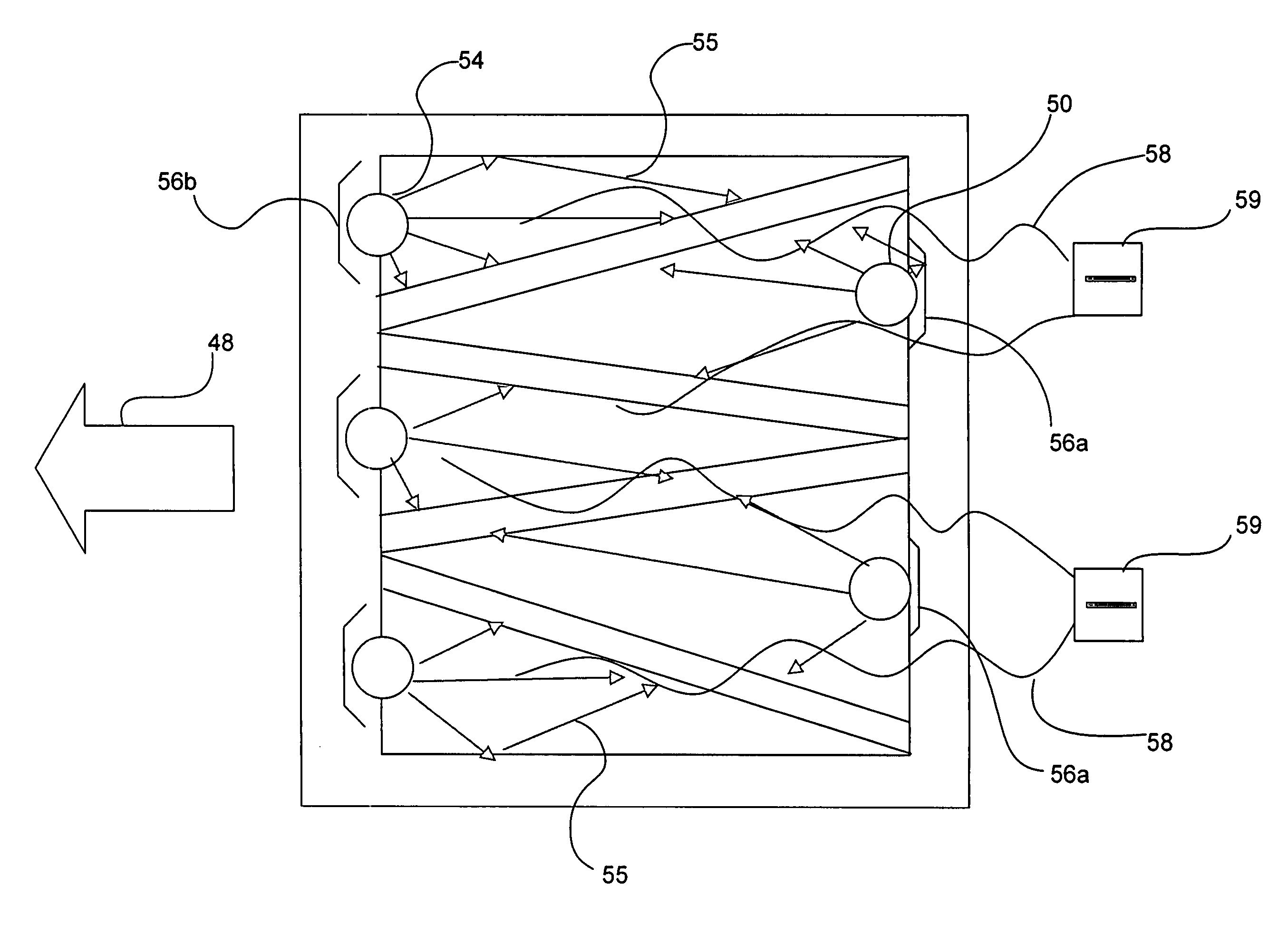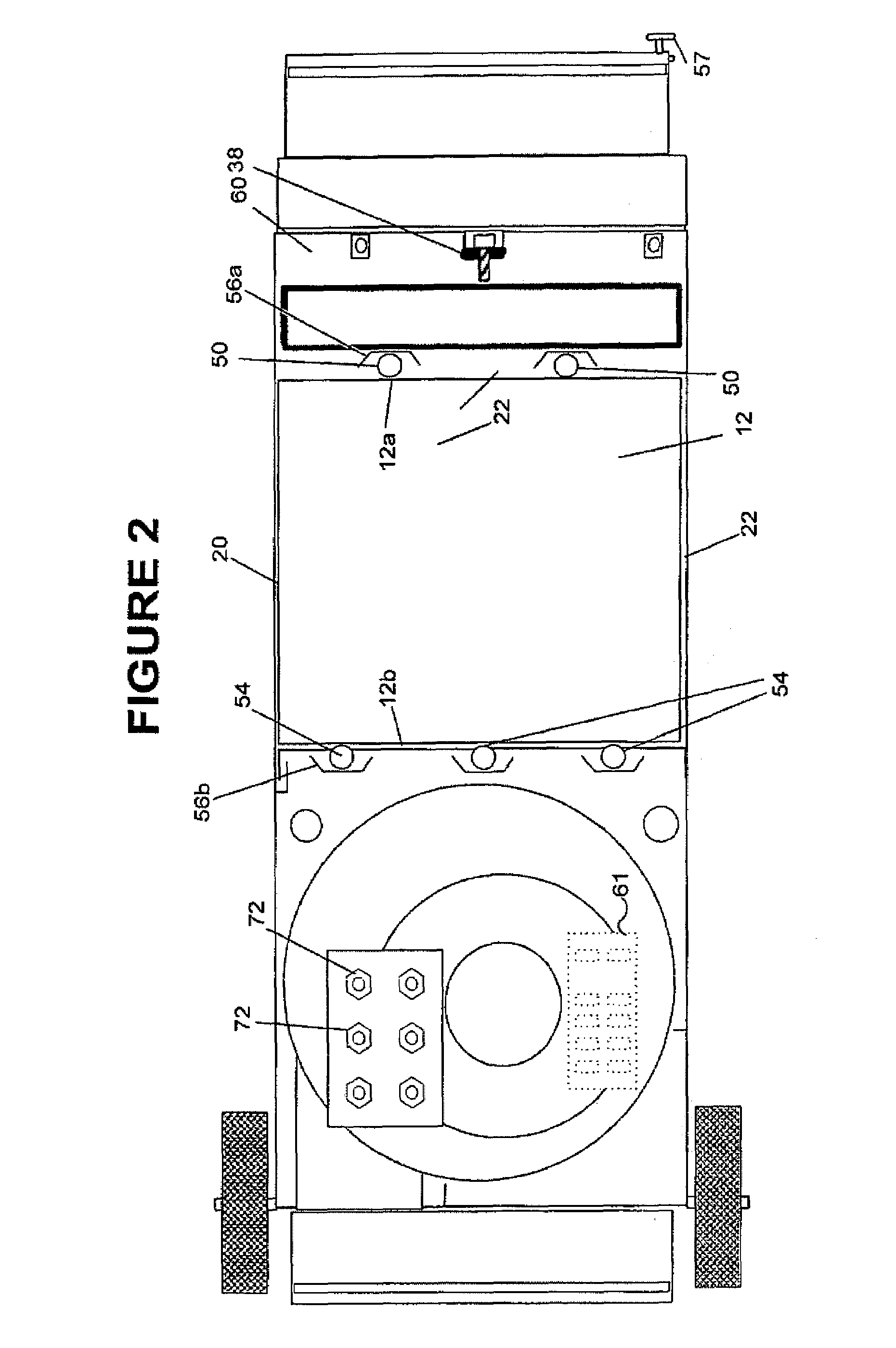Air decontamination devices
a technology of air decontamination device and filter, which is applied in the direction of disinfection, energy-based chemical/physical/physicochemical processes, and efficient regulation technologies. it can solve the problems of irritants and infectious agents contaminating the air, and affecting disinfection. it can slow down the motion of biological agents, improve the effect of disinfection effect, and improve the effect of disinfection
- Summary
- Abstract
- Description
- Claims
- Application Information
AI Technical Summary
Benefits of technology
Problems solved by technology
Method used
Image
Examples
Embodiment Construction
[0045]FIG. 1 is a cross sectional schematic representation of a decontamination unit 10 including a filter 12, in accordance with an embodiment of the invention. FIG. 2 is a top cross sectional schematic view of the decontamination unit 10 of FIG. 1. The decontamination unit 10 comprises a housing 14 with a top wall 16, a bottom wall 18, two side walls 20 and 22, a front wall 24 and a back wall 26. An air inlet 28 and an air outlet 30 are defined in the housing 14, in this example in the front wall 24 and the back wall 26. The air inlet 28 and / or the air outlet 30 may be defined in other walls, instead. The housing 14 and structures within the housing define an air path A between the inlet 28 and the outlet 30. The housing 14 is preferably air tight, except for the air inlet 28, the air outlet 30, and optional air sampling ports 72 discussed further, below. The walls of the housing 14 are preferably steel. At least one wall should be removable or hinged to facilitate opening so that...
PUM
| Property | Measurement | Unit |
|---|---|---|
| size | aaaaa | aaaaa |
| size | aaaaa | aaaaa |
| wavelength range | aaaaa | aaaaa |
Abstract
Description
Claims
Application Information
 Login to View More
Login to View More - R&D
- Intellectual Property
- Life Sciences
- Materials
- Tech Scout
- Unparalleled Data Quality
- Higher Quality Content
- 60% Fewer Hallucinations
Browse by: Latest US Patents, China's latest patents, Technical Efficacy Thesaurus, Application Domain, Technology Topic, Popular Technical Reports.
© 2025 PatSnap. All rights reserved.Legal|Privacy policy|Modern Slavery Act Transparency Statement|Sitemap|About US| Contact US: help@patsnap.com



